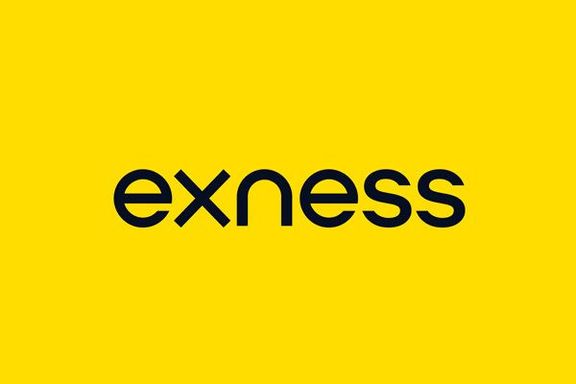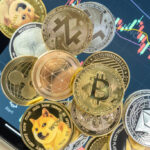
Have you ever walked into a bank to purchase foreign currency to spend on a trip out of the country? What about purchasing a product from a Chinese website with prices listed in yuan using your debit card? These transactions are what form the basis of what forex trading is. More specifically, Forex trading, also known as foreign exchange or FX trading, is the process of buying and selling currencies with the goal of making a profit. The forex market is the largest and most liquid financial market in the world, with a daily trading volume exceeding $7 trillion. Unlike stock markets, which have centralized exchanges, forex trading occurs over the counter (OTC) through a global network of banks, brokers, and financial institutions.
The primary reason for forex trading is to facilitate international trade and investment, but many traders participate to speculate on currency price movements. Since currency values fluctuate due to economic, political, and market factors, traders aim to profit by exchanging one currency for another at the right time.
Currencies are traded in pairs, such as EUR/USD (Euro/US Dollar) or GBP/JPY (British Pound/Japanese Yen). When you trade a currency pair, you are simultaneously buying one currency and selling another. The goal is to predict whether the base currency (the first in the pair) will strengthen or weaken against the quote currency (the second in the pair).
Forex trading operates 24 hours a day, five days a week, allowing traders from different time zones to participate. This continuous trading cycle makes forex highly attractive to investors looking for flexibility and global opportunities.
HOW THE FOREX MARKET WORKS
The foreign exchange (forex) market is the world’s largest financial market, where currencies are traded against each other. Unlike stock markets, forex operates 24 hours a day and doesn’t have a centralized exchange. Instead, trading occurs over-the-counter (OTC) through a network of banks, brokers, and financial institutions. This market plays a crucial role in global trade and investment, allowing businesses and individuals to exchange currencies for various purposes.
The forex market is decentralized and operates through different tiers. At the top are large financial institutions, central banks, and multinational corporations. Below them are retail brokers, hedge funds, and individual traders. The market is divided into three main trading sessions—Asian, European, and North American—which overlap at times, creating high liquidity and volatility.
MAJOR PLAYERS IN THE FOREX MARKET
The forex market is a vast, decentralized financial system where currencies are exchanged daily, influencing global trade and economies. Unlike stock markets, which have centralized exchanges, forex operates over-the-counter (OTC), meaning transactions occur directly between buyers and sellers through electronic networks. This unique structure allows a wide range of participants to engage in currency trading, from governments and financial institutions to individual investors.
Understanding who drives the forex market is crucial for traders, as different participants influence market movements in unique ways. Let’s take a closer look at the key players in the forex market and their roles.
Central Banks – The Market Movers
Central banks play a crucial role in the forex market by anaging a country’s monetary policy and controlling the supply of money. Their actions directly influence exchange rates, making them some of the most powerful forces in the forex world.
How Central Banks Influence the Forex Market
- Interest Rate Decisions: When a central bank raises or lowers interest rates, it affects the value of its currency. Higher interest rates typically attract foreign investment, strengthening the currency, while lower rates can weaken it.
- Monetary Policy & Inflation Control: Central banks use tools like quantitative easing or tightening to control inflation, impacting currency demand.
- Foreign Exchange Reserves: They buy or sell large amounts of their own currency to stabilize fluctuations, a practice known as currency intervention.
Some examples of major central banks are:
U.S. Federal Reserve (Fed) – Influences the U.S. dollar, the most traded currency.
European Central Bank (ECB) – Manages the euro, impacting EU economies.
Bank of Japan (BOJ) – Frequently intervenes in the forex market to manage the yen’s strength.
Bank of England (BOE) – Plays a key role in determining the value of the British pound.
Traders closely monitor central bank meetings and statements, as their decisions can trigger major price movements in the forex market.
Commercial Banks – The Liquidity Providers
Commercial banks are the backbone of the forex market, handling the majority of daily transactions. These institutions facilitate currency exchanges for businesses, governments, and investors, ensuring liquidity and smooth market operations. Their involvement is crucial in maintaining the stability and efficiency of the global currency exchange system.
One of the primary roles of commercial banks in forex is interbank trading, where large banks trade currencies among themselves in the interbank market, helping set benchmark exchange rates. They also play a key role in facilitating client transactions, assisting multinational corporations, hedge funds, and retail traders in exchanging currencies for various business and investment purposes. Additionally, many commercial banks act as market makers, providing buy and sell quotes for different currency pairs, ensuring continuous market activity.
Major financial institutions like JP Morgan, Citibank, Deutsche Bank, and HSBC are among the top participants in the forex market. Their large-volume trades and deep market influence often drive significant price movements, impacting global currency exchange rates.
Hedge Funds & Institutional Investors – The Big Speculators
Hedge funds, investment firms, and pension funds play a significant role in the forex market, primarily engaging in trading for speculation and hedging purposes. These institutions often deal in high volumes, contributing to market liquidity and volatility. Their strategies vary, but their presence can significantly influence currency price movements.
One of the main ways hedge funds and institutional investors trade forex is through speculative trading, where they use complex algorithms and high-frequency trading strategies to profit from short-term price fluctuations. Additionally, they engage in currency hedging, a strategy used to minimize risk by locking in exchange rates for future transactions, protecting themselves from adverse currency movements. Another common approach is carry trading, where institutions borrow in a low-interest-rate currency and invest in a higher-yielding currency to capitalize on interest rate differentials.
Due to their substantial capital and influence, hedge funds and institutional investors can cause significant price swings in the forex market. Their large-scale trades often shape market trends, making them key players that retail traders and other market participants closely monitor.
Corporations – The Real Economy Players
Global businesses and multinational corporations actively participate in the forex market to facilitate international trade and manage currency risks. Unlike speculators who trade for profit, corporations engage in forex transactions as part of their daily business operations, ensuring smooth cross-border transactions and financial stability.
One key reason corporations trade forex is for import and export transactions. Companies like Apple, Toyota, and Samsung need to exchange currencies to pay suppliers or receive payments from international customers. Additionally, businesses involved in foreign direct investment (FDI) must convert large sums into local currencies when expanding operations overseas. Another major factor is hedging against currency fluctuations. Exchange rate volatility can impact a company’s bottom line, so corporations use forex hedging strategies to protect themselves from unfavorable price movements.
For example, if a U.S. company imports products from Europe, it needs to buy euros (EUR) and sell U.S. dollars (USD) to pay European suppliers. If exchange rates fluctuate significantly, the cost of goods can rise unexpectedly. To mitigate this risk, many companies use hedging techniques, such as forward contracts or options, to lock in exchange rates and maintain financial predictability.
Retail Traders – The Small but Growing Force
Retail forex traders are individuals who buy and sell currencies through online platforms, aiming to profit from fluctuations in exchange rates. Although they represent a smaller portion of the market compared to banks and institutional investors, retail trading has grown significantly in recent years due to advancements in technology, improved access to trading platforms, and the availability of leverage.
Many retail traders participate in the forex market primarily for speculation, using technical and fundamental analysis to anticipate price movements and execute profitable trades. Another major draw is leverage trading, where brokers offer high leverage, allowing traders to control larger positions with a relatively small capital investment. Additionally, the accessibility of the forex market plays a crucial role in attracting retail traders. Since forex operates 24 hours a day and can be accessed from anywhere with an internet connection, it provides individuals with ample opportunities to trade at their convenience.
Retail traders use various strategies to capitalize on market movements, including day trading, where they open and close positions within the same day, swing trading, which involves holding trades for several days to capture larger price movements, and scalping, a strategy that focuses on making multiple quick trades for small profits. However, due to the market’s volatility and complexity, successful trading requires more than just strategy—it demands knowledge, effective risk management, and disciplined decision-making to achieve consistent profitability.
The forex market is driven by a diverse range of participants, from powerful central banks to individual retail traders. Each group plays a unique role in influencing currency prices and market liquidity.
For traders, understanding how these key players interact can provide valuable insights into market trends, volatility, and price movements. Whether you’re a beginner or an experienced trader, staying informed about central bank policies, institutional strategies, and global economic events can improve your forex trading decisions and increase your chances of success.
HOW FOREX PRICES ARE DETERMINED
The forex market is a global, decentralized marketplace where currencies are constantly bought and sold. Unlike stocks or commodities, there is no centralized exchange setting the price of a currency. Instead, forex prices fluctuate based on the fundamental economic principle of supply and demand. When demand for a currency rises, its value appreciates; when demand falls, its value depreciates. However, this balance is influenced by several key factors, including economic indicators, interest rates, political events, and market sentiment. Understanding these factors can help traders make informed decisions and anticipate potential price movements.
Economic Indicators: Measuring a Nation’s Health
Economic indicators provide insights into a country’s financial stability and growth, influencing investor confidence and currency valuation. Some of the most critical indicators include:
- Gross Domestic Product (GDP): A country’s GDP represents its total economic output. Strong GDP growth signals a healthy economy, which can strengthen its currency, while weak GDP growth may cause depreciation.
- Employment Rates: High employment levels indicate economic stability, attracting foreign investment and boosting the currency’s value. Conversely, rising unemployment can weaken a currency as it signals economic distress.
- Inflation Rates: Inflation affects purchasing power. Moderate inflation is generally positive, but excessive inflation can erode a currency’s value, while deflation may signal economic stagnation.
- Traders closely monitor economic reports, such as the Non-Farm Payrolls (NFP) in the U.S. or Consumer Price Index (CPI) data, to gauge the strength of an economy and predict currency movements.
Interest Rates: The Driving Force Behind Currency Strength
Interest rates, set by central banks, play a crucial role in determining forex prices. Higher interest rates typically attract foreign investors looking for better returns, increasing demand for that currency. Lower interest rates, on the other hand, make a currency less attractive, leading to depreciation.
For example, if the Federal Reserve (Fed) raises U.S. interest rates while the European Central Bank (ECB) keeps rates unchanged, investors may shift funds into U.S. assets, boosting demand for the U.S. dollar (USD) and weakening the euro (EUR).
Central banks, such as the Bank of England (BOE), Bank of Japan (BOJ), and Reserve Bank of Australia (RBA), regularly adjust interest rates to control inflation and economic growth. Traders analyze interest rate decisions and monetary policy statements to predict future currency movements.
Political Events: The Impact of Government Actions
Political stability and government policies significantly influence forex prices. Elections, policy changes, and geopolitical tensions can create uncertainty, leading to volatility in the currency market.
Elections and Political Leadership: A change in government can lead to shifts in economic policies, affecting investor confidence and currency strength.
Trade Policies and Tariffs: Trade restrictions or favorable trade agreements can impact a country’s exports and imports, influencing its currency value.
Geopolitical Tensions: Events like wars, sanctions, or diplomatic disputes can lead to risk aversion, causing investors to move funds into safe-haven currencies like the Swiss franc (CHF) or Japanese yen (JPY).
For example, during Brexit, uncertainty surrounding the UK’s exit from the European Union caused sharp fluctuations in the value of the British pound (GBP). Traders must stay informed about political events that can trigger sudden price swings
Market Sentiment: The Psychology of Traders
Market sentiment refers to the overall attitude of traders and investors toward a currency. It is influenced by global economic conditions, risk appetite, and speculative activity.
- Risk-On vs. Risk-Off Sentiment: When investors are optimistic about economic growth, they take on more risk, investing in higher-yielding currencies like the Australian dollar (AUD) or Canadian dollar (CAD). This is known as risk-on sentiment. During economic uncertainty, investors shift to safe-haven currencies like the U.S. dollar (USD), Japanese yen (JPY), or Swiss franc (CHF), in what is called risk-off sentiment.
- Speculative Trading: Large institutional investors, hedge funds, and retail traders influence forex prices through speculative trading. When many traders expect a currency to strengthen, they buy, increasing its value—and vice versa.
Sentiment is often measured using indicators like the Commitment of Traders (COT) report, which tracks the positioning of institutional traders, or the Volatility Index (VIX), which measures market uncertainty..
Forex prices are shaped by a complex interplay of economic, political, and psychological factors. Economic indicators provide insights into a country’s strength, interest rates influence capital flows, political events create uncertainty, and market sentiment drives short-term fluctuations. For traders, understanding these dynamics is essential for making informed decisions and navigating the forex market successfully. By keeping an eye on global developments and economic reports, traders can better anticipate price movements and improve their trading strategies.
GETTING STARTED: CHOOSING A FOREX BROKER
Before diving into forex trading, choosing the right broker is crucial. Your broker serves as your gateway to the market, impacting your trading experience and success. For beginners, I recommend Exness because it excels in key areas essential for traders.
Exness is fully regulated by top financial authorities like CySEC, FSA, FSCA, and CBCS, ensuring fund security and transparency. It offers low trading costs with ultra-low spreads, no hidden fees, commission-free trading on most accounts, and competitive swap rates.
With flexible leverage options, including up to 1:Unlimited (depending on regulations), customizable margin requirements, and negative balance protection, Exness accommodates both beginners and experienced traders. It provides access to over 100 forex pairs, including major, minor, and exotic currencies.
Exness also stands out with instant deposits and withdrawals, multiple payment options (bank transfers, credit/debit cards, e-wallets, and cryptocurrencies), and 24/7 processing with no withdrawal fees.
Overall, Exness is a top choice for forex traders due to its strong regulation, low costs, flexible leverage, diverse currency pairs, and seamless transactions.
Conclusion
Forex trading offers a dynamic and global marketplace where traders can capitalize on currency fluctuations for profit. With its decentralized nature, continuous 24-hour trading, and participation from a wide range of market players—from central banks and multinational corporations to individual retail traders—the forex market presents opportunities for both beginners and experienced investors. By understanding the factors that influence currency values, such as economic indicators, interest rates, and market sentiment, traders can make informed decisions and improve their chances of success. Whether you’re looking to hedge against currency risk or speculate on price movements, getting started with the right broker, like Exness, can help you navigate this complex market with confidence and ease.






Pingback: Understanding Forex Charts and Indicators - Investing Journal
Pingback: The Best Time to Move Your Stop Loss to Breakeven - Investing Journal
Pingback: Retailcapitalmanagement.com : Read this before choosing them. - Investing Journal